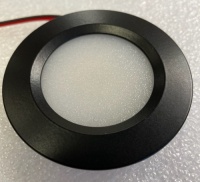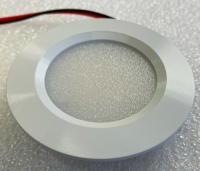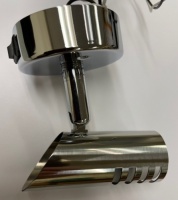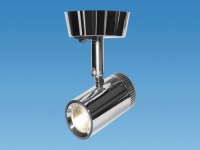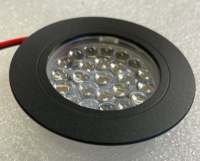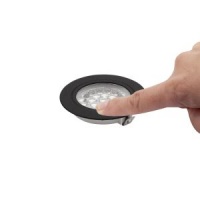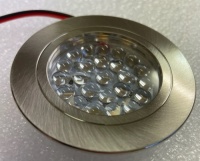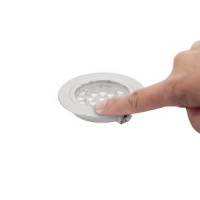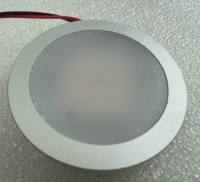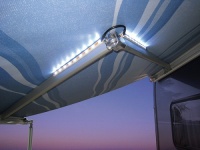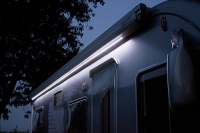What is an LED?
LED stands for Light Emitting Diode. They have been around for decades, however, in recent years they have become more and more affordable. Unlike incandescent and halogen bulbs, LEDS are made up of a solid material called a semiconductor. This material is encased either in glass or translucent plastic and can be inserted into a normal screw or bayonet light fitting. When electricity is passed through the semiconductor, tiny subatomic particles called electrons begin to move which produces energy. In this case the energy is emitted in the form of visible light. The more electricity used, the brighter the illumination.
What is a Halogen Bulb?
Halogen lights work in a very similar way to standard incandescent bulbs. In fact, they are essentially an extension of the incandescent design which has been around for over 150 years. A tungsten filament sits at the heart of the halogen bulb surrounded by a quartz envelope which contains within it a halogen gas. When electricity is supplied to the tungsten filament it begins to glow just as it does within an incandescent bulb. The more energy produced by the filament the brighter the light, and the whiter it becomes in colour. As the tungsten glows it begins to evaporate, giving off tungsten atoms. With an incandescent light this results in the tungsten losing its ability to glow quickly. In the halogen design, the presence of the gas creates a reaction which takes the tungsten vapour and re-coats the filament with it. This substantially increases the number of hours a halogen lamp can work for.
Why is an LED Better Than a Halogen Lamp?
While a halogen bulb has a number of advantages over an incandescent light, LEDs contain a number of benefits over halogen lamps. These include:
-
Colour Profile : LEDs are available in a whole range of colours for any lighting situation. Halogen lights burn much hotter than incandescent bulbs and therefore only produce a bright white light. This might be good for some situations, but when a different colour is required, LEDs are a better option.
-
Heat : Halogen lights not only burn brightly, but they also produce a lot of heat. They can cause a nasty burn when touched by accident and will raise the temperature of a room significantly. This can cause real problems especially in hotter climates. LEDs produce very little heat and do not add to an environment's temperature. Due to their low heat output they are also safer and have a lower chance of starting an accidental fire.
-
Energy Consumption : Halogen bulbs use a large amount of electricity to produce light. This can lead to substantial energy bills. LEDs on the other hand use only a fraction of the power which can lead to huge savings each month. They are also better for the environment as they reduce the carbon footprint of those who use them through lower power consumption.
-
Long Lasting : While Halogen lamps last longer than their incandescent counterparts, LEDs can burn for a staggering 60,000 hours. In that time a consumer would have to buy anywhere from 10 to 20 halogen bulbs just for one socket. This again saves a large amount of money on replacements. It also cuts down on maintenance times. Install an LED and don't worry about it for years to come.
-
Power Source : While halogen bulbs can make excellent torches, they are often used in conjunction with a mains power source. LEDs on the other hand are able to work off of something as small as a watch battery due to their low power consumption. This increases their uses markedly. Outside Christmas lights, light strips, garden lights - LEDs can easily be used for any situation without the need to be connected to a main electricity supply. This can circumvent any concerns about having a live cable being exposed to the elements.
-
Durable : Because LEDs are made from a solid semiconductor they are much more durable than halogen bulbs. Halogen lights are made from quartz and glass and therefore are much more fragile. They can be broken when dropped or bashed, and while the quartz gives them more durability than incandescent bulbs, LEDs are far more reliable. Drop one and it will probably still work. What's more, with little or no glass, LEDs reduce the risk of an animal or child stepping on a stray shard when broken.
-
Compact Design : LEDs come in a variety of shapes and sizes and can be manufactured to almost any specification. This is why they are included in everything from mobile phones to security lights. Halogen lamps are more constrained by their bulb design, and as such are less adaptable. LEDs can happily sit flush in a wall cavity or floor without having to make any major changes to the surroundings.
When compared to halogen bulbs, LEDs quite clearly come out on top in a variety of ways. While halogen lights have their advantages, when it comes to savings and longevity, you cannot go wrong with an LED light source.
